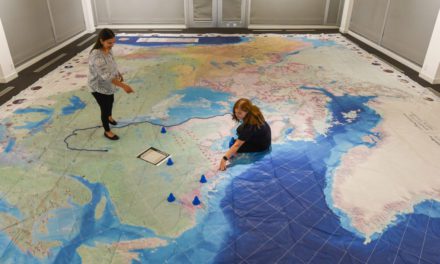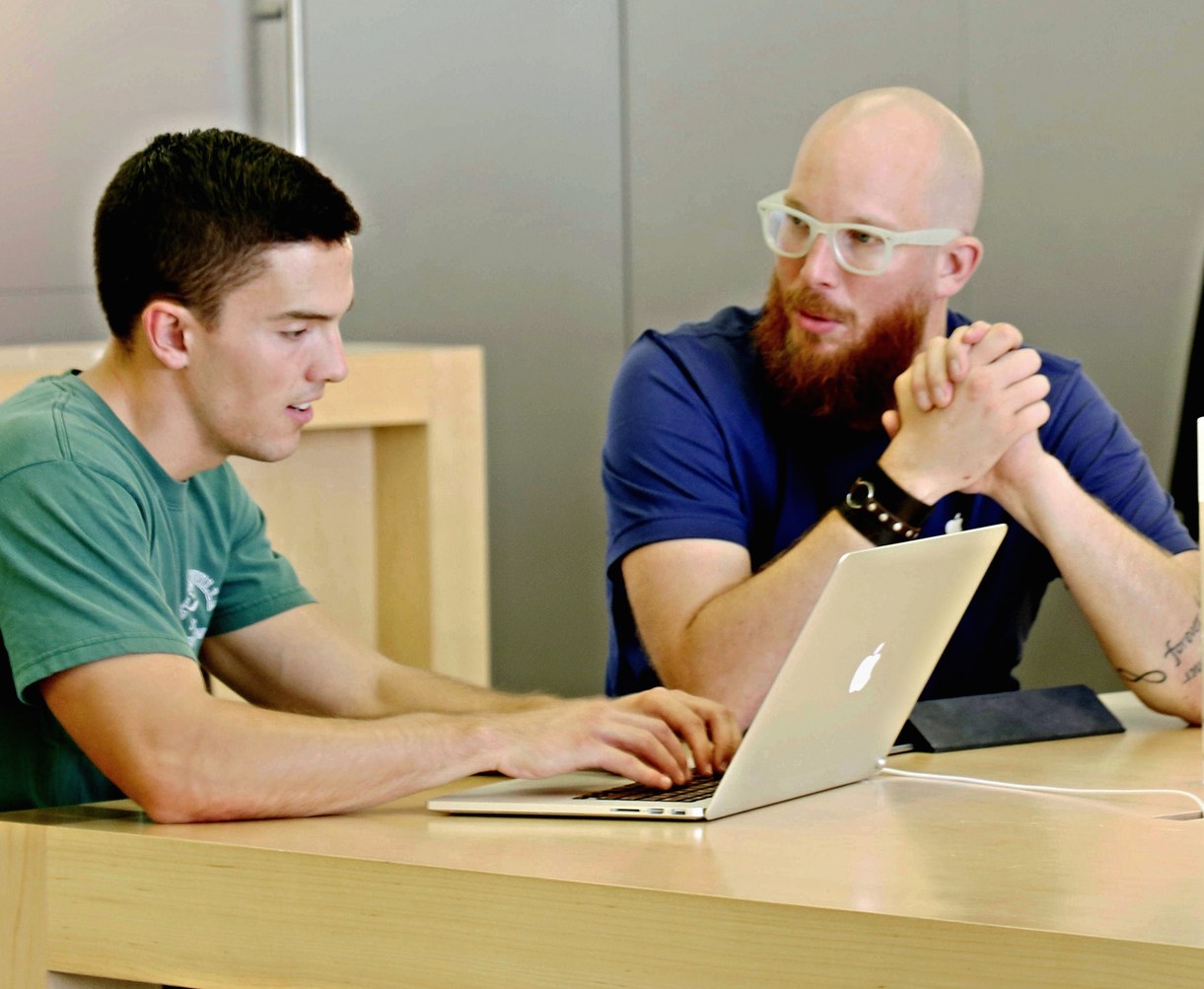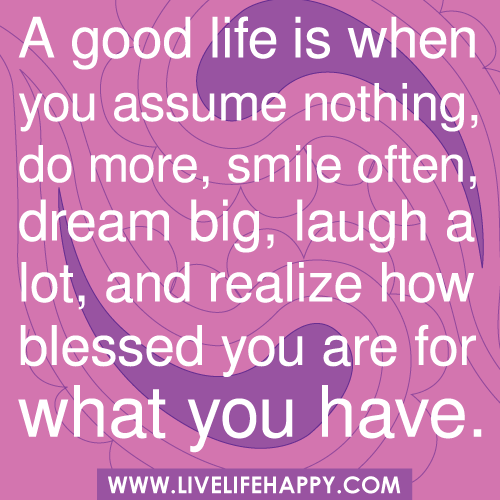This post is part of the Life as a Pre-Service Teacher series. You can read the first post in that series about Experiential Learning here.
Adam Young is a B.Ed candidate at Bishop’s University in the Secondary Education/English concentration. His main area of research is education for sustainable development (ESD), with a focus on comparative research between Quebec and Swedish educators and school systems. His work has been presented at a number of workshops at Bishop’s and afar. Adam is currently serving an internship as the Sustainable Education Communities Intern. In 2012 he received the SPEAQ Student of Merit Award for his presentation on being “Environmentally-Conscious in the ESL Classroom.”
When I explain to other educators the importance of education for sustainable development (ESD), I tout the deep connections we can make through the Broad Areas of Learning of Environmental Awareness & Consumer Rights and Responsibilities, as well as Citizenship & Community Life. As to how exactly we get educators to become fully involved in this, well, that’s often a different story.
Although most educators can get behind the idea of ‘environmental awareness’, there may be some fear of not knowing enough or having a too limited understanding of the science behind the planet’s countless environmental problems. But apart from the science, what exactly constitutes citizenship, and whose role is it to teach our students to actively get involved in their communities as citizens? Model parliaments and debates in the Contemporary World course are all fine and dandy, as is debating ethical issues in ERC, but what happens within the other courses to truly have students understand the power they hold as citizens? Furthermore, how do we encourage our students to exercise their rights long before they are called on to vote?
On a recent research trip to Sweden I met a series of students who reaffirmed the importance of citizenship within our schools. I was invited to visit a small primary school on the outskirts of the town of Falun, in the centre of the country. There, the students had a school representative council, with members of the council arriving two-by-two every hour to escort me to a different part of the school to show me how they were enacting their ESD-themed goal of Health and Well-Being. The council was valued by all in the school and the greater community as they not only represented the voices of their fellow students, but also were active in planning future projects, such as the renovation of their newly-opened cafeteria, and deciding on the food that would be served.
Citizenship however, takes on many more forms than this. In a high school with which I have been working in Stockholm, half of their school council consists of students, but what about the other students at the school? Beyond the school council, students are bringing about change through involvement with youth wings of larger international organizations or political parties. They are also critically examining the various neighbourhoods of their cities, surveying the amount of green spaces and trees, and proposing to city councillors -who listen to their every word- on what could be improved.
As educators we often see a diversity of different projects that center upon citizenship, and a new project with Learning for a Sustainable Future (LSF) focuses on the projects shaping our own communities here in Canada. The bilingual Our Canada Project was developed out of a series of roundtable discussions with participants from across the spectrum of business, service clubs, educators, and youth in particular. The result is their online project that invites educators to shift into “responsible citizenship”. LSF’s idea centers upon key traits they found from their discussions, such as responsibility, being active, and contributing as a responsible citizen by shifting from knowledge and action to also valuing citizenship. This takes our in-school and extra-curricular projects with students to a different -though more challenging- dimension. It’s one thing for us to do a project with our class, it’s much more difficult however to change one’s values.
 Online, the Our Canada Project has a wide range of projects up thus far. From composting and school garden programs, recycling and rain barrels, to creating boardwalks and awareness events on a number of ecological and social issues. While still in its infancy, the site provides a ray of hope in the area of citizenship education and, if anything, can provide some great sources of inspiration for our own community projects. Registering your own group’s project is quick and simple, including uploading a photo and outlining the project, a great activity you could do with your students as a step in development. The youth-imagined site encourages us as educators to upload our own interdisciplinary projects and recognize that we’re not alone; there is always strength in numbers!
Online, the Our Canada Project has a wide range of projects up thus far. From composting and school garden programs, recycling and rain barrels, to creating boardwalks and awareness events on a number of ecological and social issues. While still in its infancy, the site provides a ray of hope in the area of citizenship education and, if anything, can provide some great sources of inspiration for our own community projects. Registering your own group’s project is quick and simple, including uploading a photo and outlining the project, a great activity you could do with your students as a step in development. The youth-imagined site encourages us as educators to upload our own interdisciplinary projects and recognize that we’re not alone; there is always strength in numbers!
Now in the midst of a provincial election campaign, we are reminded of our collective role as citizens again. Unsurprisingly, one of the lowest demographics of voters has consistently been young people. Traditionally we’re used to seeing that one teacher in our school who teachers about elections, who uses the traditional Canada Votes resources and keeps the fold-up mock polling booths in the corner of the classroom. Developing these skills is crucial, but if our “practice runs” with our Sec 5 students aren’t actually getting them voting once they have the opportunity, it seems a little all for naught. As I witness in my work in education for sustainable development (ESD), these voting exercises leave the concept to the realm of a short unit, an LES, or as a subject-specific activity that fails to recognize it as part of a larger Broad Area of Learning across all the subjects, and an essential foundation of school life.
In Learning for a Sustainable Future’s reports on responsible citizenship, they present some interesting facts from the Institute for Canadian Citizenship’s 2012 survey results (http://www.icc-icc.ca/en/news/citizens.php). In order of popularity, results suggest that the surveyed top attributes to a good citizen include equality of the sexes, following laws, voting, protecting the environment, and respect for other religions. Surprisingly, some knowledge of Canadian history and being an active participant in one’s community was at the lower end of priorities. While we’re making gains with many of these issues in society, we might be quick to pigeon-hole them to the responsibility of another subject, such as ERC. But maybe the best way to demonstrate these values to our students is to really get them involved in the community, form meaningful school councils, and make voting for student representatives a larger event at the school.
Beyond the ideas mentioned above, developing citizenship projects that go beyond the school walls and into the community might hopefully have our students reconsider what it means to not just be a citizen, but a change maker. As educators, we need to think beyond our subject content and the limited time we feel we have to get through curriculum. At the end of the day, citizenship is a lifetime responsibility and social contract we make with others and our governments. It requires collaboration and ingenuity, and not sticking to the status quo. Start with the values already in your students, and help them see the bigger picture. Perhaps they’ll see citizenship a bit differently.





